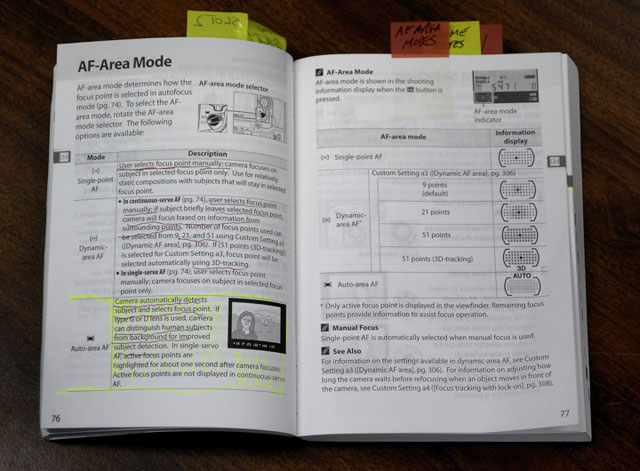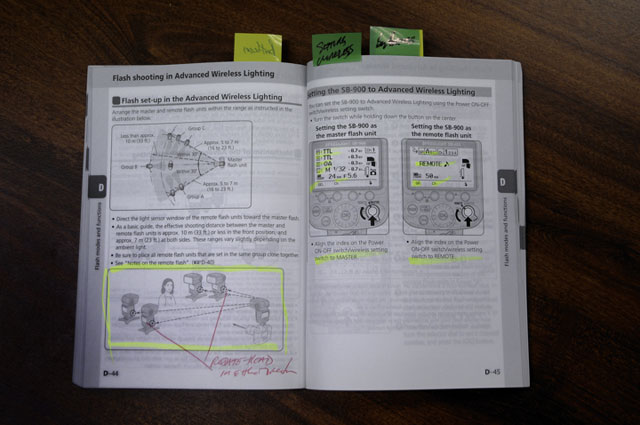How to Read Your Camera Manual
As a writer and editor in the photo business I find myself from time to time in the office of Lindsay Silverman, senior technical manager at Nikon. Invariably, there'll be a stack of camera manuals on his desk. Nothing unusual there, but what distinguishes Lindsay's collection is the fact that the pages of these manuals bristle with tiny color tags.
One day I asked, "What's with the Post-it flags?"
"That's the way I read manuals," Lindsay said.
"You mean that's the way you mark them for future reference.
"Well, yes and no," he said. "C'mon, I'll buy you a cup of coffee and explain it."
To start with, he said, manuals in general have a bad reputation. "I hear it all the time: 'Who wrote this stupid manual?' 'Why does it have to be so long?' But the problem isn't the manual, it's the way a lot of people read it—or don't read it. They take the camera out of the box and while the battery charges up they'll either ignore the manual and go do something else, or they'll sit down and start to read the manual, intending to go cover to cover."
"It's not a novel," he said. "It's a lot of information, and like a manual for any product that involves a degree of technology, a camera manual can be confusing simply because it's hard to digest in one shot."
"And you suggest?"
"Here's what I do. I break it down into categories of information: What do I already know? What do I need to know right now? What do I need to know a lot of the time? What do I need to know some of the time?
"Let's say it's a digital SLR, like the D200. I know how to mount a lens, how to put the battery in—I work at Nikon, I gotta know that! I also know how to go into the custom settings menu because I'm familiar with those steps from a previous Nikon model, so I can set some basic functions.
"Next, what do I need to know now? For me that's metering and autofocus choices, the speed of the frame advance and details of the custom settings. I don't sell the custom settings short: they're what makes the camera mine and makes it work for me the way I want it to work. Custom settings aren't something I get to eventually, I go there pretty quickly."
"Okay," I said, "I got the order of things. But the color tabs?"
"I know, it may sound weird, and my colleagues chide me on this, but we all have our ways of learning and doing things. As I read the sections I'm interested in—and this can be over a period of days—I'll get to things I want to know about, and I mark the sections according to my own code of interests: red for flash info, yellow for the operating modes of the camera and so on. Now I can go right to the information I need when I need it."
"Making it accessible and digestible," I said.
"Right. To me it makes no sense to read any manual front to back. There's no narrative there; there's no story. There's information, facts and suggestions, and I want to go to them as I need them."
"What about the quick setup guides that come with the cameras?
"They come with everything these days," Lindsay said, "and they're the easy way in. But they tell you what you need to get started, not what you need to get into the things that allow you to really control and customize your camera, the things you need to get the most out of the camera."
Well, I didn't go out and buy Post-it flags after talking with Lindsay, but I did take his suggestions to heart: no more cover-to-cover for any manual—camera, DVD recorder, electronic keyboard, anything. I'm going right to what I need to know immediately, and I'll learn the rest as I need to and as I go along. Hey, my cell phone manual has more pages than The Old Man and the Sea, but it's nowhere near as engaging.







